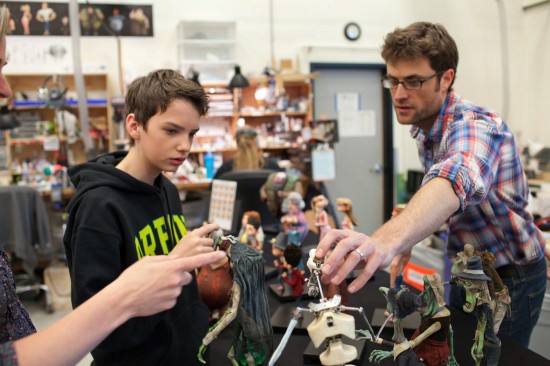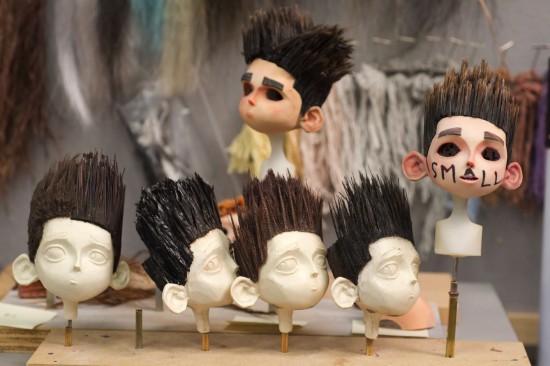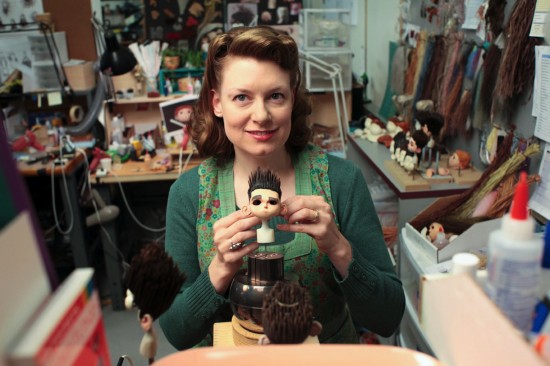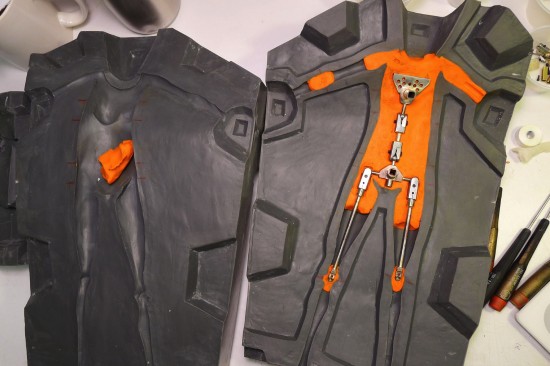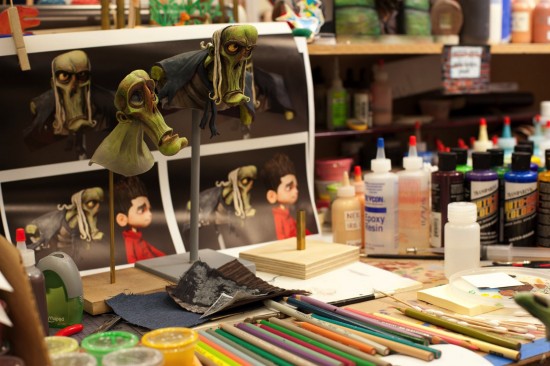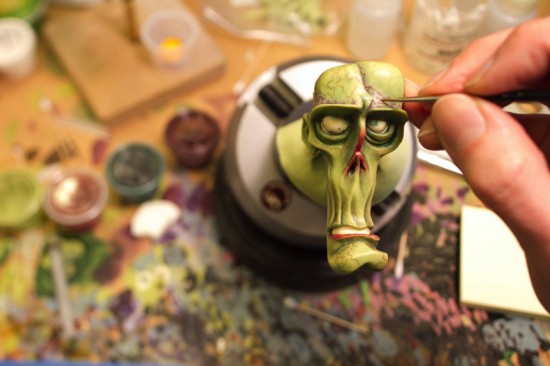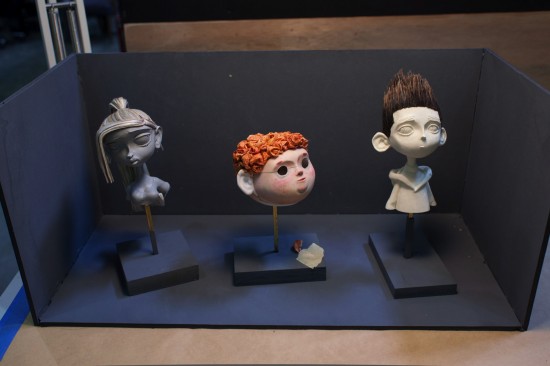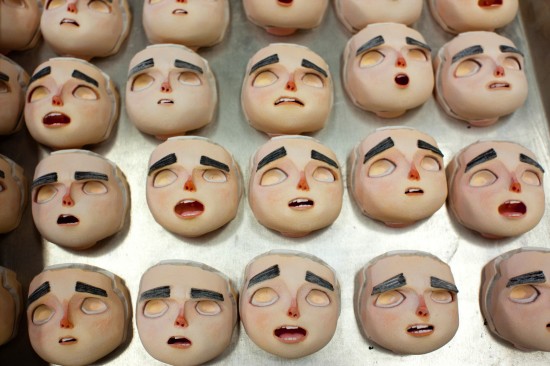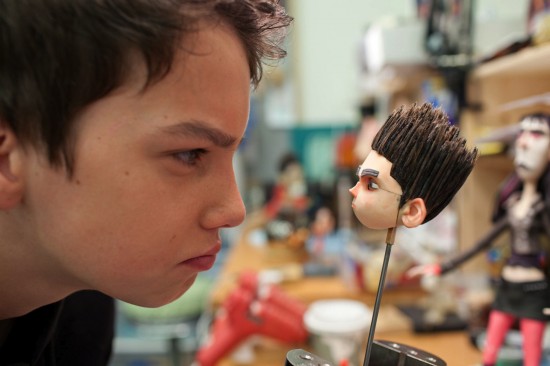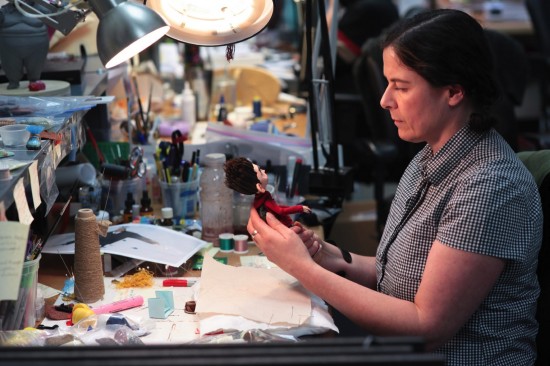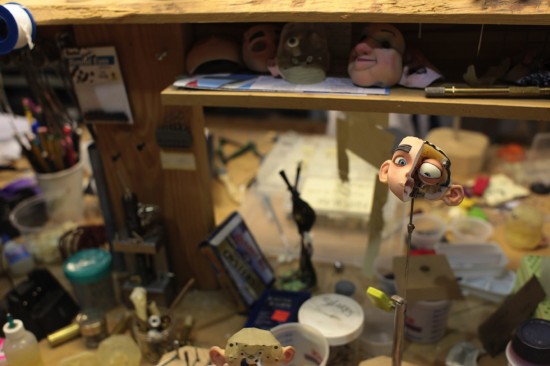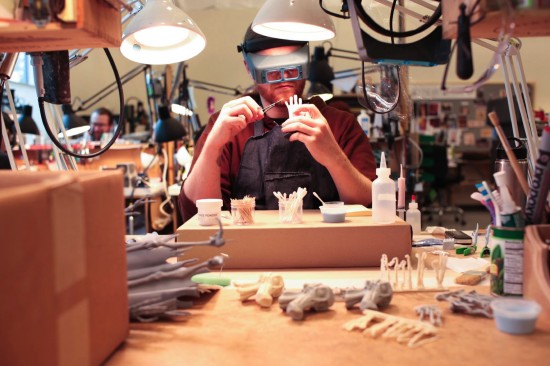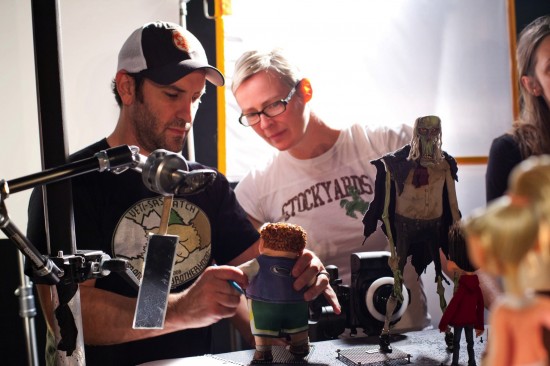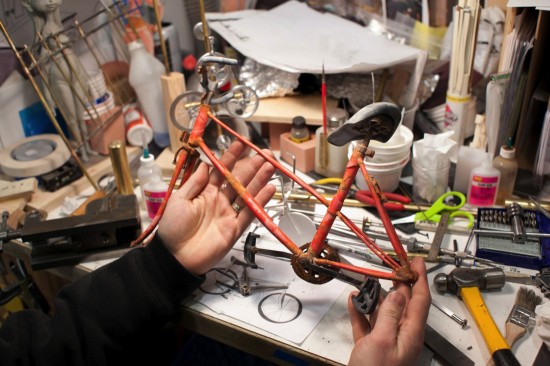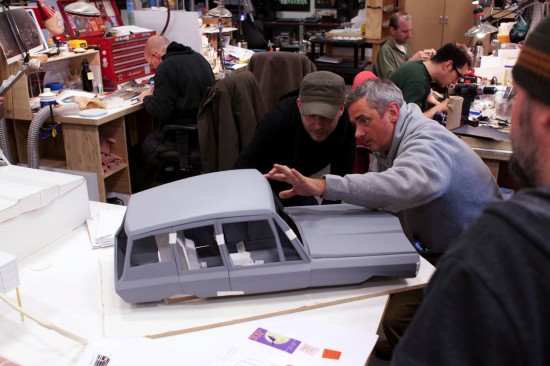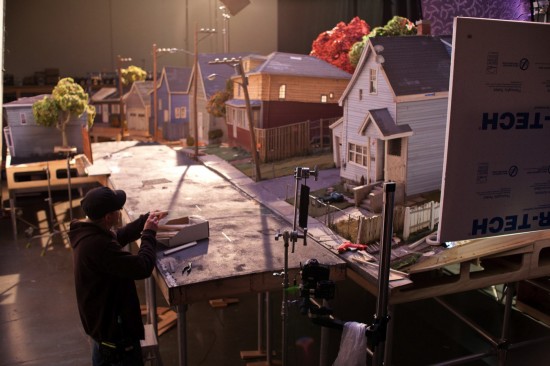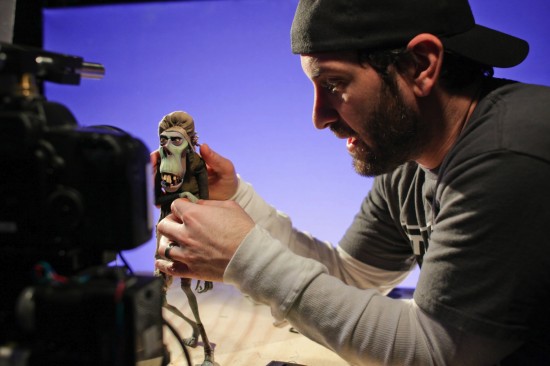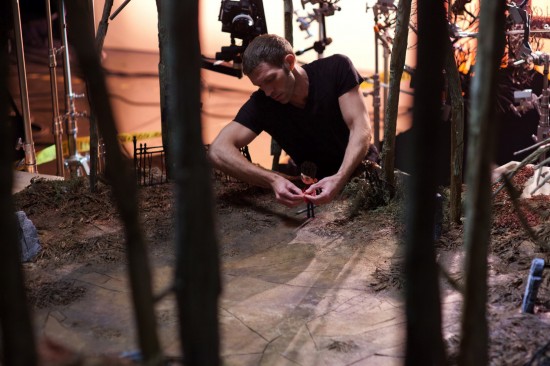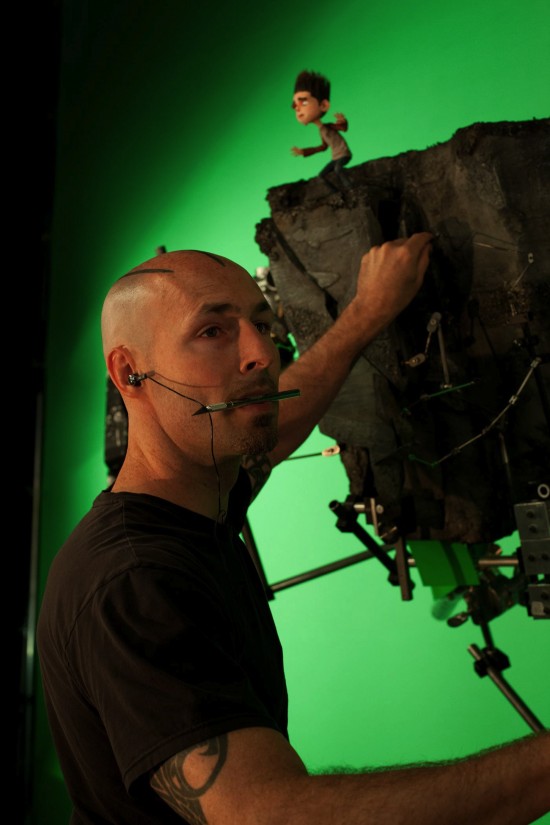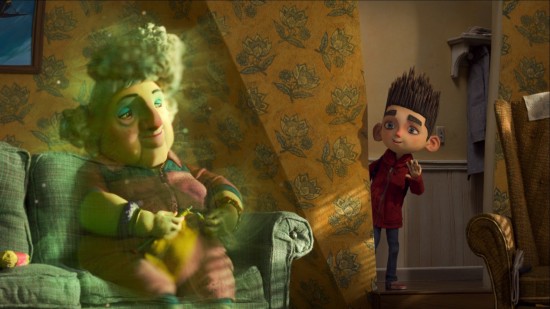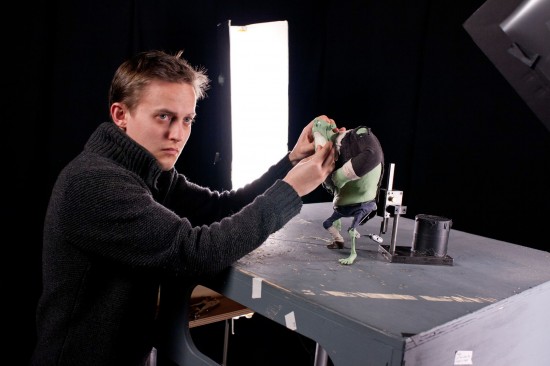How Laika Used 3D Color Printers To Create The Stop-Motion Animated Movie 'Paranorman' And 50 Other Things We Learned On The Set
In February 2012, I visited the the Portland based animation studio Laika to watch production of their latest stop motion animated feature film ParaNorman. The 2009 adaptation of Neil Gaiman's Coraline earned the group critical and public acclaim, and many have been waiting to see what the hand-crafted independently owned production would create next.
This is the first time I've ever had the chance to visit a stop-motion animated production, and what I learned about the process both amazed and shocked me. I was surprised to find out how much artistry and patience goes into a film like this, more than you could ever imagine. Also, Laika is brining innovation to their artform, introducing 3D color printers to the mix. Find out how they used 3D color printers to create the characters you'll watch on screen, along with 50 other fun factoids I learned on set. I've also included a ton of behind the scenes photos, showing the artists at Laika creating their own brand of magic, and a video blog I recorded with Steve from Collider. All this and more, after the jump.
All production on ParaNorman took place at the LAIKA Studios located in Hillsboro, Oregon. The production facility in a 151,140-square foot building space with a crew of over 320 talented designers, artists, animators and technicians. When I think of Laika, I've always thought they could be the next Pixar and imagined their workplace would be as cool as the now Disney-owned animation studio. But it quickly became apparent that Laika is putting all their money on the big screen. Their production facilities are as simple and unglamorous as you could possibly imagine.
The studio is in a very unassuming office building outside of Portland. There are no signs outside the building, and the desk in the lobby has the Laika company swirl, but no logo. Being in the lobby, you still wouldn't know you were in Laika unless someone told you.
Laika is owned by Nike co-founder and Chairman Philip H. Knight. Knight's son Travis acts as its President, CEO, producer and lead animator of Laika. Laika started as Will Vinton Studios. Travis was working at Vinton Studios when the advertising market tanked after 9/11, and the studio was going to fail. When Philip bought the company in 2005, he polled the employees for a new nam. All of the entries were put on index cards on a board. Philip walked into the room and picked Laika from the bunch. Laika means "Little Barker" in Russian, but It wasn't picked because of that meaning. Philip only later learned the word's meaning.
Most films are shot over the course of handful of months. Stop-Motion Animation is much longer process. ParaNorman started flaming in the beginning of January 2010, and the end of filming will be in March 2012. I visited the set on February 15th 2012, and they had progressed to six day workweek. 350 people worked on ParaNorman. Even though the film has way more effects shots, the budget for ParaNorman "in the same ballpark" as Coraline. The visual effects team is completely in house, which helps.
Travis Knight says that Laika is "the fusion of handcraft and technology". Laika's goal is to produce handcrafted films, enhanced with the addition of the latest technologies (be it 3D cameras, computer generated elements and rig removal, and 3D printing). They want to push technology in service of the arts and not to push technology just to push it.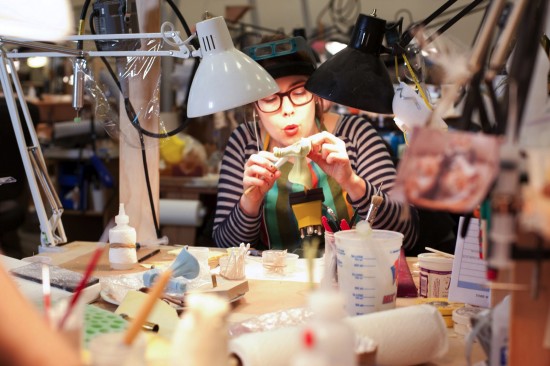
Laika doesn't want to have a "house style" or a particular look (like say, Aardman Animation), allowing each of their movies to have their own unique style. They also aim to find different stories than the other animation companies. Travis says that "There isn't one type of film we want to make." Laika wants to make films like the classic Disney live action movies and the Amblin films of our childhoods, films that will always feel classic.
Paranorman has been described as a Love letter to the horror kids movies from the 1980's. Director Chris Butler came up with the idea for Paranorman about 14 or so years ago. Originally it was a zombie movie for kids, in the tone of Goonies and Scooby Doo. It has expanded in scope over the years. Co-director Sam Fell (Flushed Away, The Tale of Despereaux) liked the story, connecting to the horror references, and came on board to develop the film. Inspired by the Amblin films, they wanted to make a kids film which didn't hold back, wasn't preachy, dealt with serious issues in a real way, but also had fun.
Laika hopes to produce a film a year beginning in 2015, and they have a distribution deal for the first films with Focus Features. They will be in production on a new film by the end of the year.
Normans hair doesn't move for most of the film, but there a couple sequences when it does. He has 4-5 stunt wigs that allows the animators to animate every possible strange. There are 275 spikes in Norman's signature hair style. His hair was primarily made out of goat hair held together with hot glue, hair gel, fabric, and super glue – as well as medical adhesive, Pros-Aide make-up adhesive, thread, and wire. Once built, it was hand-finished with paint and human hair dye.
There is an "puppet holding" room where the puppets rest between shots.
How the puppets are made: The characters are first created in pencil sketches, converted into computer generated 3d models, and later turned into maquettes. From there, they use the maquette statues to decide which parts will move, which will be painted, costumed, etc.
A 100 foot room houses 50-60 artists creating the puppets, from costume designers to hairdressers. Everyone works painting and costuming puppets at work desks.
Underneath the puppets are an intricate armature, a metal skeleton that can he moved in each of the joints. They require constant maintenance and "surgery." While this has not been drastically changed over the years, some of the large characters have gears. The animators can turn a key hidden in the back of the character to move and animate. Norman's fat friend Neil has a gear in his stomach which allows his belly to move.
Silicon is used for all the body skins. The zombie characters have hard skulls underneath their silicone skin, but their facial expressions are hand animated from shot to shot.
The faces of the main characters need more precise emotion, requiring facial replacement animation. For example, Jack Skellington in Nightmare Before Christmas had multiple sculpts for different faces that were poped on and off. Jack had 800 different facial looks, all of them hand sculpted.
Laika has been pushing the facial animation for stop motion animation. For Coraline, they animated the faces in the 3D computer program Maya, printed them out with a 3D printer, and painted them by hand. In the end, the paint coloring of every Coralline face had to be watered down because of the extended process of painting thousands of faces. A big innovation on Paranorman was the inclusion of a 3D colored printer, which prints the faces in completed colors.
ParaNorman is the first stop-motion movie to utilize a 3D Color Printer to create replacement faces for its puppets. Over 31,000 individual facial parts were printed for the production. Thanks to the face replacement technology created by the 3D Color Printer, Norman has over 8,800 faces with a range of individual pieces of brows and mouths allowing him to have approximately 1.5 million possible facial expressions. The brow and the mouth are separate, so the compiled combinations are in the hundreds of thousands.
The 3d printed faces are ready to go. The only time they need touch ups is to add a gloss or something like that. Because they no longer have to hand sculpt and paint every facial appliance, they can print many more versions than they would normally. They have faces with multiple noses and eyes used in an action moment for motion blur. For example, they employed 150 faces for the tooth paste sequence you see for a few seconds in the trailer.
Paranorman has 62 individual characters, some with many multiples of the main characters. The production has 178 puppets in total, one of the largest stop motion features ever. The production has printed over 30,000 faces. In comparison, Coraline used about a third of that — 12,000.
Because the facial implants come in two pieces, each character has crack lines in their faces when the movie is shot. The visual effects department remove the crack lines in post, and digitally remove the rigging department's rigs. Sometimes the sets shift under the heat of the bright hot lights, and the visual effects department is needed to find a solution.
The 3D printing process also produces sub surface scatting, a process which has taken a lot of time in computer animation to make skin look real.
It took 60 puppet makers to create 178 individual puppets for ParaNorman.
120 different costumes were designed and created for ParaNorman. The puppet's costumes have complex hand stitched lines, very detailed and authentic looking. You wouldn't believe the amount of miniature detail that goes into each outfit.
Throughout the production, artists make new arms for the characters as the arms are the most likely to break. We watched one painter touching up a character's finger nails as those tend to wear off quickly during animation. The paint dept is also responsible for painting wear on the characters costumes. The details are so tiny that they sometimes need jeweler magnifying glasses to do the work.
Norman's head's is comprised of 78 little individual pieces. They had to create an elaborate joint to only allow Normans eyes to move left right up and down. The eyeballs are fascinated which means they can't rotate.
Norman has almost 80 different metal components in his armature. It takes two weeks to make a Norman armature after it is fully designed. It takes three to four months to make the puppets from start to finish, which is supposedly the exact same amount of time as computer animation.
In a rapid prototyping department, 40 people work to reproduce every little piece inside the characters. They break down every facial expression and create a version for each possible vocal movement so that the animators can animate the dialogue.
They use 3D Systems Z Printer 650 to print the models in color. They worked closely with the company to make this possible. Certain color shades aren't in the range of the 3d printer, so they printed the entire paint tone book out to figure out how to calibrate it and print the color they want in the final puppet. During the production of Paranorman, they employed four color printers, with one of the four broken down at any moment.
It takes about an hour to print a face, which sounds like a lot of time but isn't considering the volume. Printing one face on a 3D printer would be like printing one thumbnail on a page with a normal printer. Printing many faces on one print layer takes the same amount of time as printing one face. They also can print many layers of faces at the same time. Production maxed out at printing 150 faces at once, which took almost 18 hours.
The 3D printed faces are sanded and dipped in a special type of superglue for less than one second. After they dry off, they are sent over to the face library, a room with isles of shelves of plastic containers containing every possible variation of every characters face. Each kit has a name – Norman's Smile kit, Norman's frown kit, Norman's basic kit...etc.
The rigging department is responsible for suspending the models on the sets for the animators to animate them. They also create units that move the sets around. For example, there is a moment in the climax where the earth opens up. The rigging department created a device which can move the ground. The smallest animate object rigged on Paranorman was a drop of spit which comes out of the zombies mouth. It basically looks like a very small drop of liquid on the end of a tiny stick (think very thin paperclip looking armature) which can be moved to create the animation. They also created a large complex rig to animates the dark clouds in the sky, animating them millimeter by millimeter with small wires.
Back in the day on Nightmare Before Christmas they didn't have the ability to digitally remove rigs. They had to film each sequence around hiding the rigs behind props or other characters in frame. That compromise meant that the performances had to work around that conceit. On ParaNorman, they have the ability to digitally remove the rigs and get the best possible performance and shoot every sequence without having to worry about hiding the rigs.
The film features 35 unique locations, with a total of 75 individual sets.
Designers based Norman's town off the towns in New England. They took a research trip to New England to study Salem, MA and get inspiration for Norman's world.
Two thirds of the movie takes place outside, and the greens department built all the trees and environments. Foliage was made it of paper so that light would show through it.
All of the props were based on Hedi Smith's original character designs. Most have off kilter angles and askew. Even though they were produced by dozens of people, the props look like they have one style and were designed by one person.
While the puppets aren't that big, the sets are huge. The exterior of Norman's Blithe Middle School is eight feet tall, twenty five feet wide. A set like this took three to four months to be constructed. It will appear in the film for 8 or 9 shots, less than a minute and a half. The largest set was the town's Main street, which features a 60 feet long dolly shot in the film.
Most of the beautiful and complex sets will be destroyed before they finish production. The way they shoot stop motion requires them to shoot all the wide shots first and as they go in for closer shots and close-ups, they chop up the sets so that the animators don't have to work through small holes in the ground.
Some of the sets are created in multiples. For example, they created four versions of the town square set so that they could animate at various stages of destruction. It also allows them to animate on multiple versions of the set at the same time.
Stop motion is often looked at as very theatrical because of the limitations of filming sets and the puppets, but Chris and Sam tried to use the new innovations to expand the scope and feel. Chris believes that the thing that makes good animation stand out is when it's well observed.
Director Sam Fell calls Stop Motion Animation "Slow motion filmmaking".
One thing unique to this production is they let animators own complete scenes, shooting nearly every shot in that segment if possible. In most 2D animation, the animators are married to a certain character and become an expert in that character's movements. In stop motion, so many multiple versions of the characters are being animated at the same time.
Horror film tributes: Some of the street names in the town are nods to famous horror classics. Some of the shots feel straight out of the Evil Dead. The opening of the movie is like a really bad Italian horror movie.
Composer Jon Brion completed the film's score. They used a lot of his songs in the temp cut of the film, including his tracks from Eternal Sunshine and Magnolia. They were afraid to ask him but when they did he said yes — Brion always wanted to do an animated film.
Travis Knight animated the zombies rising sequence, the most complicated segment of the film. It took a year to shoot that sequence, mostly due to the choice to practically animate all the environmental effects, instead of using computer animation. Every piece of dirt and spit in this sequence is painstakingly hand animated.
Production on the film is in a huge warehouse-looking studio stage. The different sets are separated by black curtains, and not walls, since sound isn't being recorded. At the productions peek, they had 52 units working at once with 25 to 27 animators shooting. In each of these make-shift curtained rooms, an animator works largely alone animating every frame of his sequence.
The animators usually record videos of themselves giving the performances, in order to use as reference. The directors give them notes on these tapes. The animators then animate a "rehearsal", which is a very rough version of the scene shot with only 12 frames a second (half the amount of the final film, repeating each frame). The directors then look at the rehearsal and give notes before the scens is shot for real. Animators usually turn in 5-8 seconds per week, depending on how many characters are in their scene.
And a lot of sequences involve ghost characters, which were animated by themselves and composited into a scene, which means that any sequence with a ghost needed to be shot and animated twice, once with the ghost, once without.
Paranorman was shot in 24 frames per second 3D, but without the use of the normal 3D camera rigs used on other live-action 3D feature films. They shot the film with Cannon 5d DSLR cameras, and they didn't have room for a 3D camera rig with two cameras side by side due to some of the tiny sets. Instead they designed a slider which would shoot every frame with the left eye, and then slide over a little to capture the right eye. Travis Knight thinks its important that they shoot 3D, saying that post-converted 3D is "not an experience (audiences are) gonna enjoy."
The visual effects supervisor Brian Van't Hul (who won an academy award for King Kong) says that "Everyone thinks that CG is easier, but CG is not necessarily cheaper."
The visual effects team is not intentionally adding flaws to match the computer animated effects with the stop motion animation, although it has been a big debate internally. The plan is to make beautiful CG and see how it looks against the stop motion. If it looks too glossy or rendered, they'll address it scene by scene. They've chosen to do some of the visual effects with handmade looking materials. They animate these effects in a computer and digitally added into a scene as they wouldn't be possible to rig on stage.
Set Visit Video Blog:

